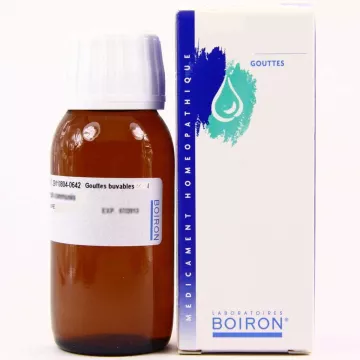What is comfrey?
Comfrey is a perennial plant in the Boraginaceae family, recognizable by its large, rough leaves and bell-shaped flowers, usually purple, pink or white. Its name comes from the Latin "consolidare", meaning "to consolidate", referring to its traditional uses to support tissue repair. Renowned as a medicinal plant in many crops, it is also much appreciated in the garden as a green manure and for attracting pollinators.
Where does comfrey come from?
Comfrey is native to Europe and temperate Asia, where it grows in rich, moist soils, often near streams or forest edges. It can be found in many different regions, from plains to mid-altitude areas. Over time, gardeners have adopted it for its many properties, from nourishing the soil to promoting biodiversity. Its agricultural and medicinal benefits have helped it spread to other parts of the world.
What does it look like?
Comfrey forms a tuft of elongated, deep-green leaves that are somewhat rough to the touch. Its hollow, hairy stems bear clusters of small, hanging flowers, often grouped by color (pink, mauve, white). The root is thick and taprooted, enabling it to draw nutrients from deep within the plant. This makes comfrey a highly appreciated plant for improving soil structure and fertility.
What are its main constituents?
- Allantoin: Comfrey's flagship molecule, recognized for promoting cell and tissue regeneration.
- Tannins: Contribute to its astringent properties.
- Mucilages: responsible for the viscous texture of comfrey-based preparations, they can have an emollient effect.
- Silica, calcium, potassium: minerals present in significant quantities, hence its traditional use as a green manure and composting supplement.
- Pyrrolizidine alkaloids: Their presence prompts caution when it comes to oral consumption of the plant.
What are its potential benefits?
- Skin support: Comfrey-based ointments or poultices are reputed to help the skin regenerate faster, in the event of scratches or small superficial wounds.
- Soothing action: Thanks to its mucilages, comfrey is sometimes applied locally to relieve minor irritations.
- Joint care: Some users believe that external use can help improve joint comfort.
- Green fertilizer: In gardening, its mineral-rich leaves are macerated to create a purin, which effectively nourishes crops.
- Soil improvement: Planted near vegetables or fruit trees, comfrey helps enrich the soil, thanks to its roots' ability to capture nutrients deep down.
How to use it in practice?
- External preparations: we make poultices, balms or ointments with the root or leaves (previously dried or fresh) for localized use on the skin.
- Infusion or decoction for the garden: Cut leaves are macerated in water to create a natural fertilizer, to be diluted before watering crops.
- Comfrey manure: Highly concentrated, it can be sprayed or sprinkled at the base of plants to enhance growth and flowering.
- Combining crops: Planting comfrey near other plants can improve soil structure, while attracting bees and other pollinators.
Are there any precautions or contraindications?
- Internal use: Due to the presence of pyrrolizidine alkaloids, comfrey is not recommended for prolonged ingestion or as a dietary supplement, as these compounds can affect liver health.
- Pregnant and breast-feeding women: As a precaution, avoid internal use. For external use, seek medical advice.
- Allergies: On the skin, test a small area (behind the ear or on the forearm) to check for any skin reaction before applying more widely.
- Dosage: Even for outdoor use, it's best to follow professional recommendations, as too much isn't always beneficial.
Are there different varieties of comfrey?
Yes, there are several species and varieties of comfrey. The most widely grown in gardens is Russian comfrey(Symphytum × uplandicum), the result of a cross between comfrey(Symphytum officinale) and comfrey(Symphytum asperum). It's often the preferred choice for slurry because of its high concentration of nutrients. Comfrey is traditionally used in phytotherapy for its external benefits on skin and joints.

